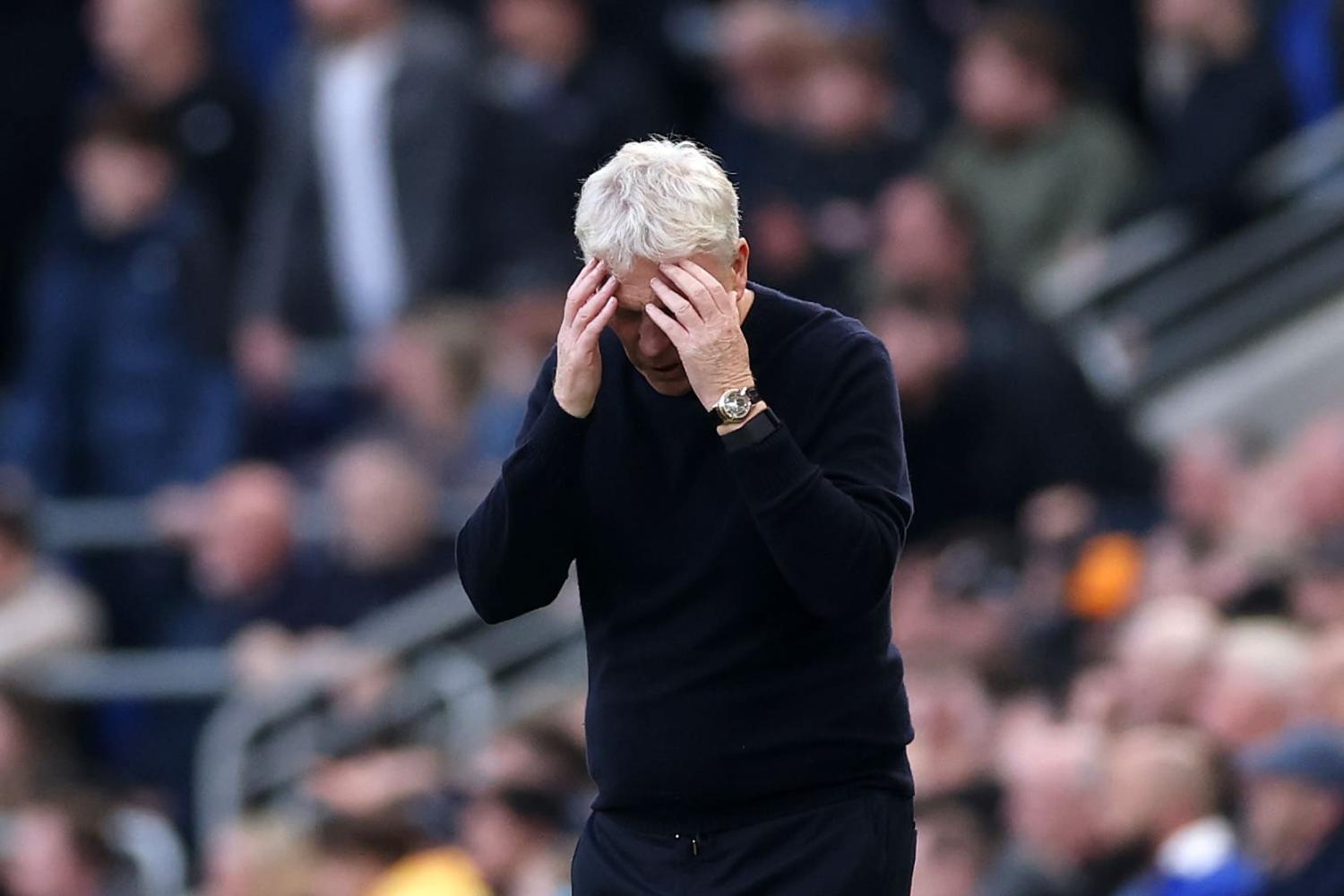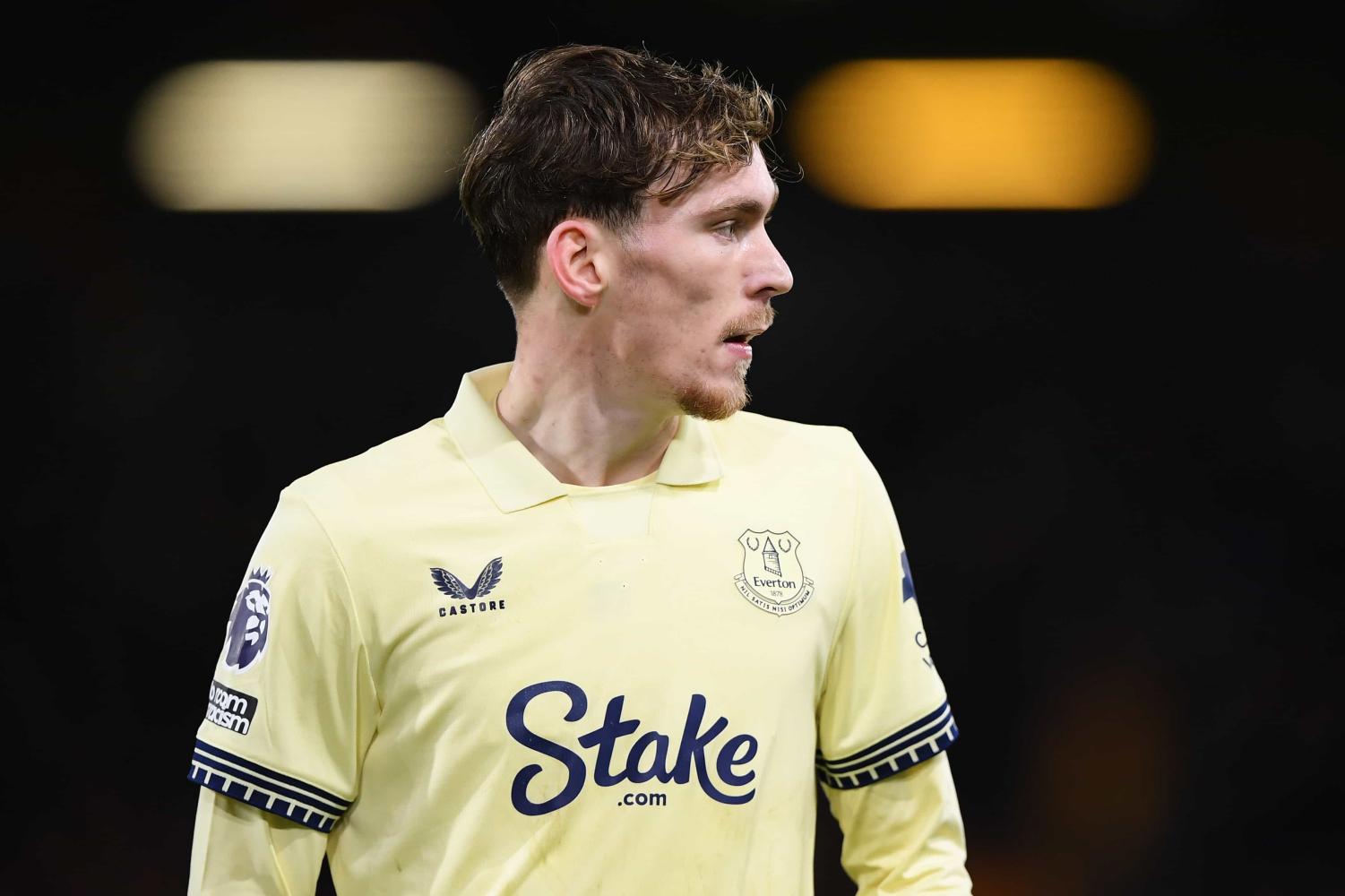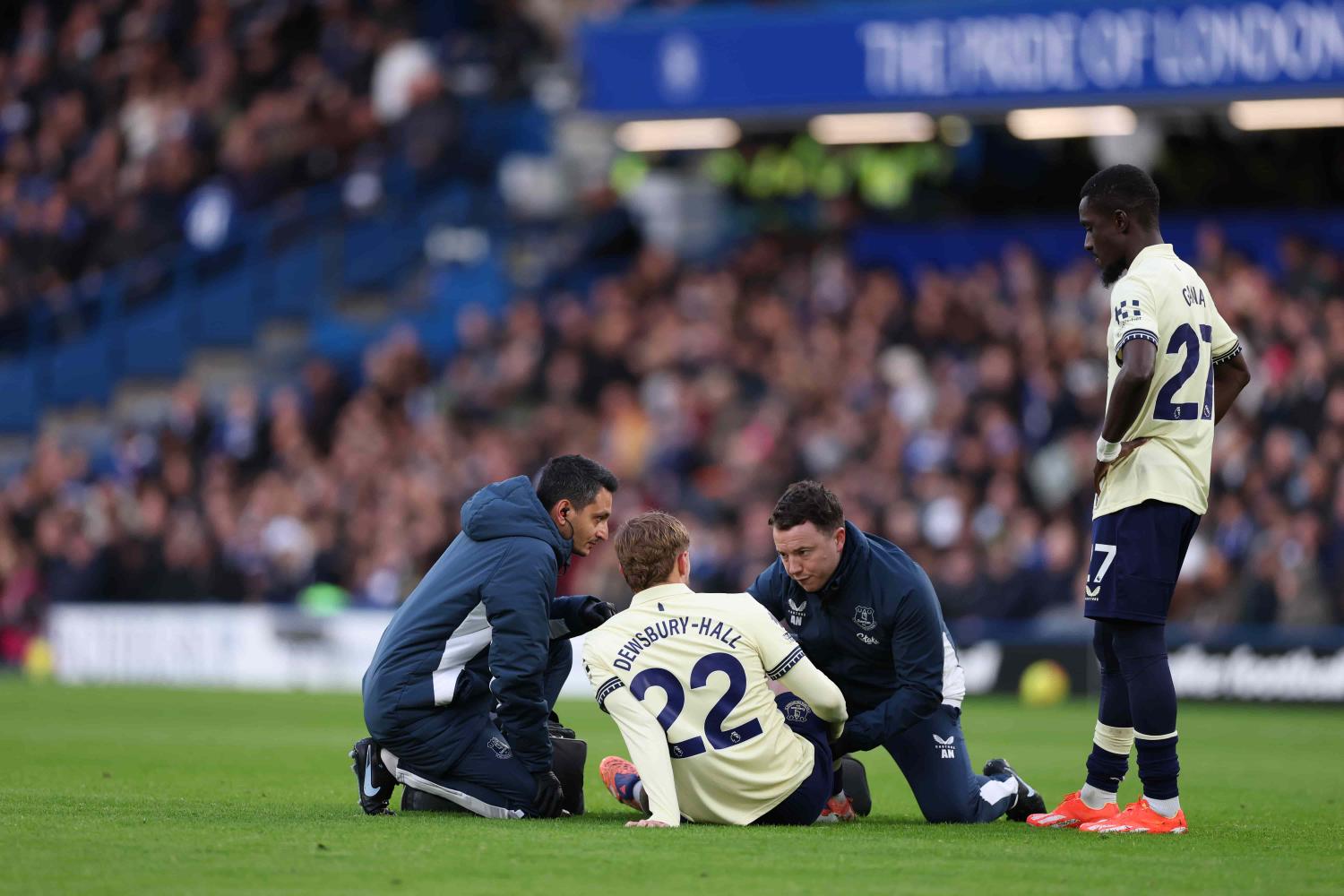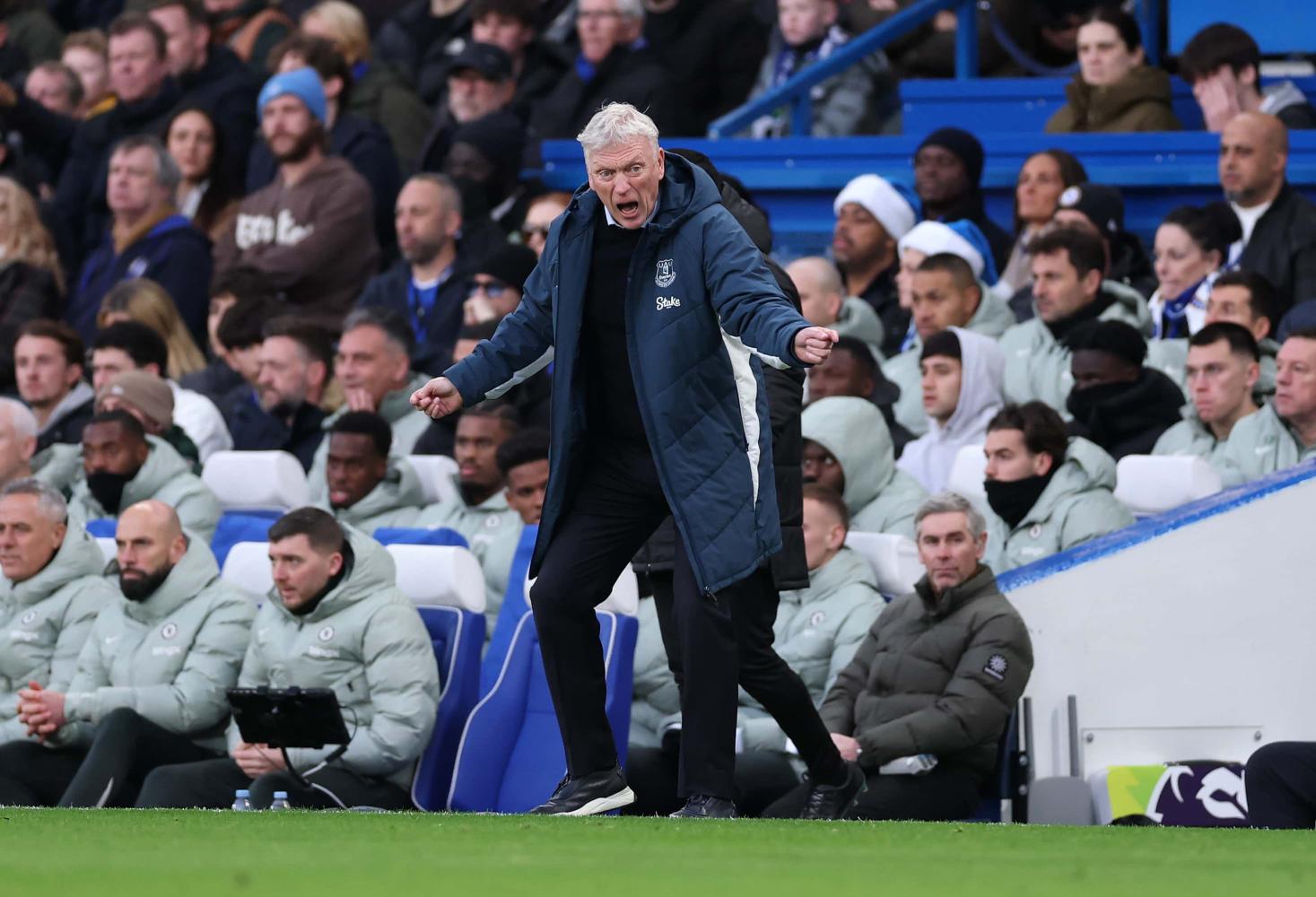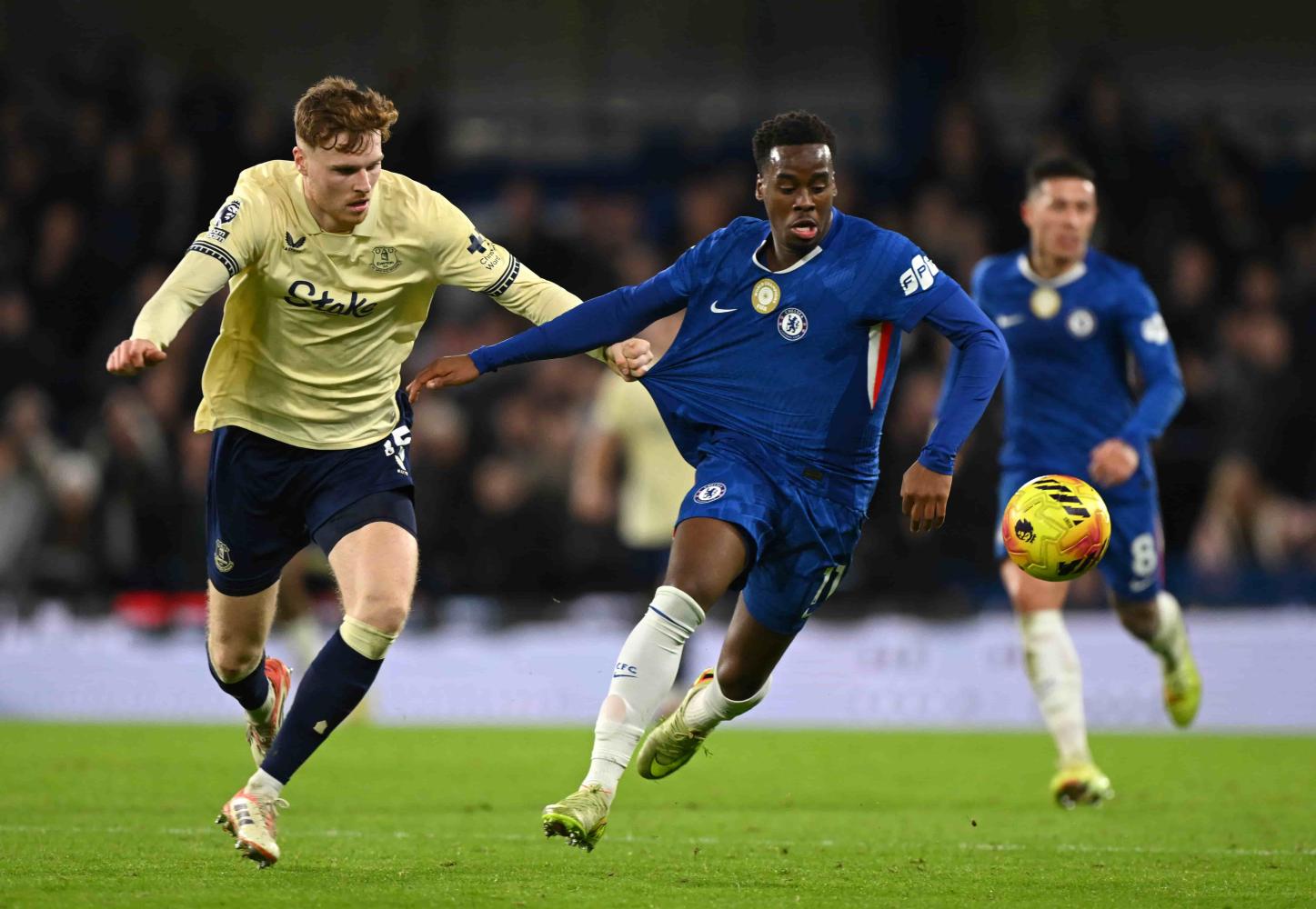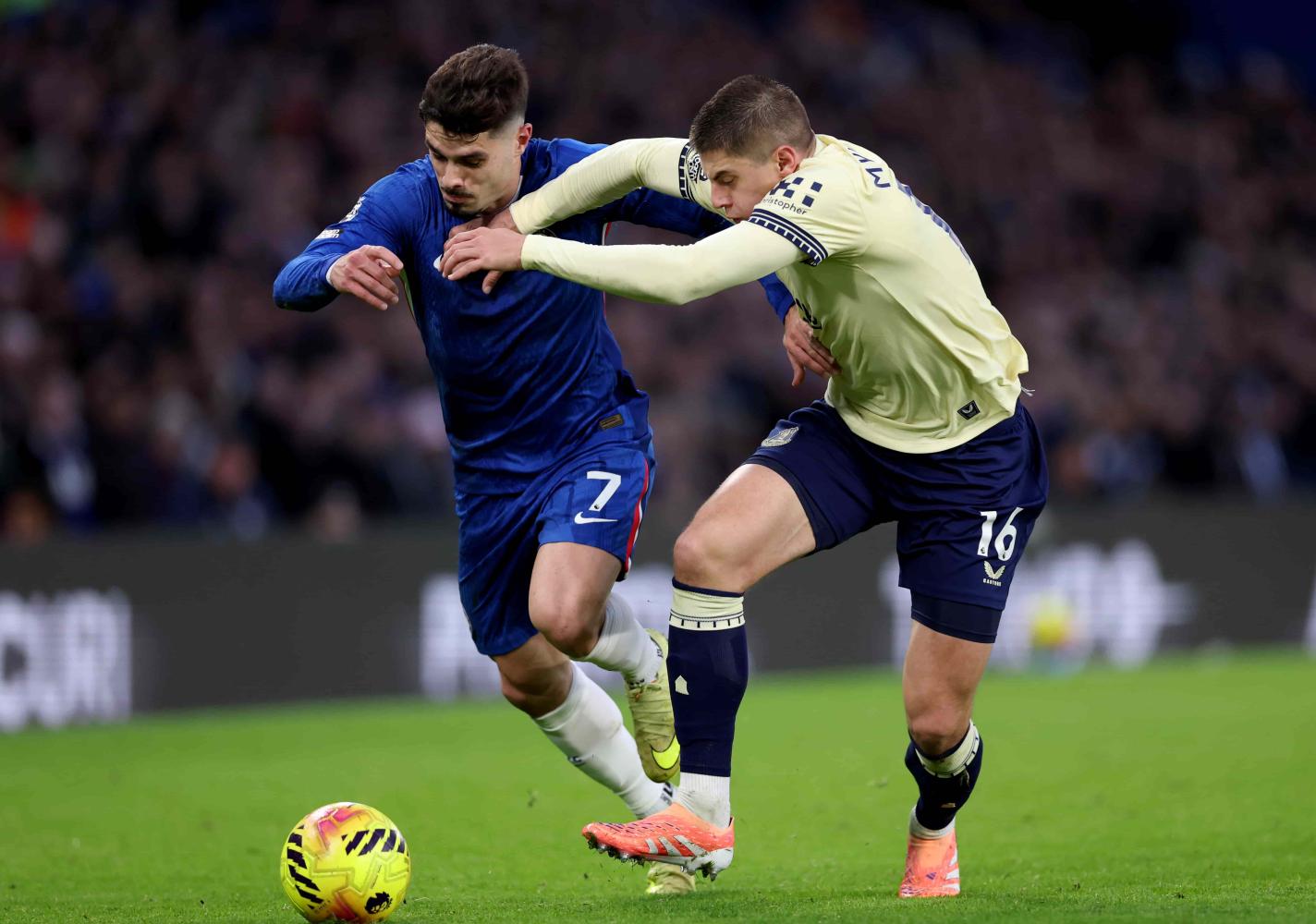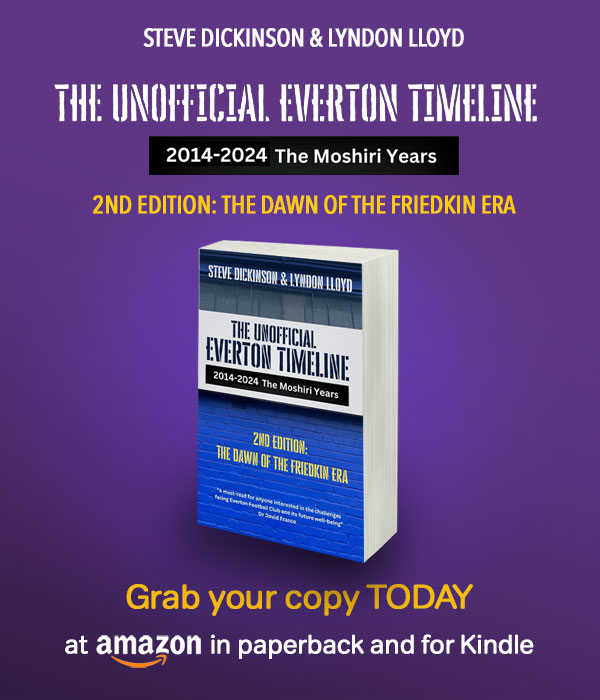Sleeping with the Enemy
The emotive issue of a joint stadium for Everton and Liverpool rears its ugly head
What Everton should do about their home stadium is a subject that has in turns interested, excited and frustrated everyone connected with the club in recent years. But while Goodison Park continues to age, the issue is one that can never go away completely, no matter how many grandiose schemes fall by the wayside for one reason or another.
With the seeds sown by the Peter Johnson regime in 1997 with the infamous attempt to re-locate Everton to a site on the outskirts of Liverpool, Bill Kenwright and Houston Securities pulled together a marvellous proposal to build a new stadium, conference centre and arena on the coveted Kings Dock site on the banks of the Mersey in 2001. As we all know, that plan eventually collapsed under the weight of political in-fighting, local opposition, rumoured Red bias on the City Council, and spiralling costs of the project.
Subsequent murmurings of a watered-down stadium project at Stanley Dock in May kept the ground-move idea alive but then came an announcement during the close season by the club that all efforts to find Everton a new home had been shelved for the foreseeable future, the emphasis now placed on re-building the team instead. The "devil's advocate" view is that this was just double-speak to mask the fact that the Board had hit the proverbial brick wall with regard to raising capital and to viable options inside the boundaries of the City of Liverpool.
That dearth of options means that the previously abhorrent idea of ground-sharing with Liverpool is gaining more and more attention. After all, both clubs are looking to build new stadia as close to their roots and supporter base as possible, so why not take the only option that appears to make financial sense for both clubs: join forces to construct one stadium that the two clubs would share?
To the outsider, this would be the sensible
choice but, as with everything to do with this famous local rivalry, things
are not that simple.
"Merseyside" — The Case for Ground-Sharing
Two clubs in the same city, separated by a mile of land, both looking to either redevelop their existing stadia or build completely new ones elsewhere. The obvious solution, the neutral would assume, would be for Everton and Liverpool to join forces and build a shared stadium. Professor Alan Harding of the University of Salford is one such neutral who espoused the benefits of the two Merseyside clubs agreeing to share a stadium in a paper in 2001.
Harding's argues that rather than go to the lengths of planning "separate solutions, designed and constructed at great expense by different teams of experts, bringing all the pressures that hosting football matches now involves to different parts of the city," the clubs should do the sensible thing and pool their resources.
The clubs could split the construction costs and remove at a stroke both the competition for the handful of viable locations in the city and the friction over Liverpool's proposed development of Stanley Park which, should they win approval to massively redevelop their existing footprint, would only intensify given the fact that it looks as though Everton will be at Goodison Park in the medium term.
Over the long term, the two clubs would also divide the burden of maintenance costs. The logistics of policing, traffic control and parking could be pooled and centrally managed, and the money saved by both clubs could better equip them for building teams capable of re-creating the domination Merseyside enjoyed during the mid-1980s. Advocates of the ground-sharing idea point to the precedent set by some of Italy's biggest clubs, most notably AC Milan and Internazionale who have shared the San Siro stadium for years while retaining their country's biggest rivalry in spite of their common home. Harding also cites Merseyside's "friendly rivalry" as one of the better reasons why a ground-share scheme could work.
Then there is the issue that Harding calls "the common good"; i.e. the benefits that a shared stadium would bring to the respective clubs and to the City of Liverpool as a whole:
- The potential to build something on a larger, more sophisticated scale together than either club could on their own (e.g. restaurants, bars, fitness centres, sports training halls, conference facilities, merchandising outlets, a hotel, a museum of football)
- The fact that the stadium would be in use every weekend for a sporting event as opposed to lying "fallow" or used just for conferences
- The opportunity to build a "Wembley of the North" that could attract big games (not to mention major non-football or non-sporting events to Merseyside instead of Old Trafford while Wembley itself remains bogged down in a logisitical and political minefield
From the point of view of logistics and economics, Harding's arguments would appear to represent the natural choice for Everton and Liverpool, but that is to ignore the very fabric of English Football: more than a century's worth of nurtured rivalries.
"'Nil Satis...' and All That" — The Case Against Ground-Sharing
For all the talk of the Merseyside derby being the "friendly derby" because the fans sit inter-mingled in the stands and the blood of local families is often mixed with red and blue, there is more history, folklore and passionate rivalry between Everton and Liverpool than in any other city in the country outside Glasgow.
Ever since Liverpool FC was born out of an acrimonious split in Everton's ranks in 1892, passions have run high between two of England's most famous and successful clubs. And although the Reds' successes since the 1970s mean that Liverpool is arguably the second most recognisable team in England in the eyes of the rest of the world (not helped by the fact that they carry the city's name), it was Everton who were at the forefront of the domestic game for most of the 20th Century.
From the time it was built in 1982 to the hosting of the World Cup Semi Final in 1966 and the construction of the world's first cantilever stand in 1971, Goodison Park was the most advanced stadium in England, surpassed in stature only by Wembley. The past thirty-odd years have seen the Grand Old Lady age badly, but the fact remains that Everton, once dubbed the "Mersey Millionnaires" have always been pioneers in the English game.
The Toffees were founder members of the Football League in 1888, founder members of the Premier League in 1992 and spent more time in the English top division in between than any other club. Everton are, for that reason, the quintessential top flight club, whether our current image reflects that or not.
110-plus years has also fostered that intense rivalry with Liverpool. It has been blue versus red, good versus evil, the "People's Club" versus the "Red Shite" for decades. Goodison Park, with all it's history and persisting majesty, despite her age, lies at the center of our identity; the spiritual home for all of us. The idea that the red hordes have to enter the blue colisseum for the Goodison derby and suffer the cauldron of noise from the home faithful lies at the core of the Merseyside derby experience. Similarly, who doesn't relish descending into the devil's lair of Anfield in the hope of putting one over the old enemy on their own turf? There is just no way that kind of atmosphere can be recreated in a shared stadium, no matter how impressive the structure.
It is the power of history and tradition that poses the biggest obstacle to discussions about a ground-sharing initiative and explains why neither Board has publically entertained the notion as anything other than a non-starter. With what colour do you replace the blue seats of Goodison, or the red of Liverpool? Where do you erect the statues of Everton and Liverpool legends of old? What happens to the Shankly Gates and the Gwladys Street End, both central to the identities of the respective supporters? Do you have an Everton half of the stadium and a Liverpool half and, if so, who is going to want to sit in the enemy's half for the other 18 home games of the season that don't pit the two clubs together? All seemingly trivial considerations to the outsider, yet central to opinions of both sets of supporters.
Put simply from an emotional stand-point, the prospect of sharing a stadium with Liverpool is utterly abhorrent.
From a more practical point of view, there are obvious concerns among Everton fans that a ground-share initiative would not be an equal partnership. It is a painful but existing reality that Liverpool FC are far better off than Everton in terms of finance, resources and perceived stature. Liverpool can afford to spend tens of millions of pounds strengthening their team and have the financial muscle to support the construction of a new stadium while continuing to build and maintain a playing squad capable of challenging for honours every season.
For Everton to commit to constructing a new ground, a prohibitive percentage of revenue would have to be devoted to those costs in the absence of willing investors in such a scheme. For all the talk of "ring-fenced" funds for the development of a new stadium, it is clear that the club simply do not have the liquid capital required to get such a largescale scheme off the ground. From the start, that means that Liverpool would effectively be in the driving seat and potentially able to dictate all manner of decisions, from architectural design and construction timelines to the division of revenue from non-footballing sources of income and priority over fixture scheduling.
At a time when Everton are trying hard to rebuild the club's image after its spectacular fall from grace in the 1990s, it would be hard to escape the feeling that the new stadium would be all about Liverpool, with the Blues being the poorer relations — tenants even — of the Reds' grand new venture. Blues fans would take come convincing that Everton would be truly equal partners.
A Case of Unequal Partners?
"Football isn't a matter of life and death. It's more important than that."
Bill Shankly's cliche has been worn to death by constant reference over the years, but while it certainly isn't true, it encapsulates the footballing rivalry that exists between the blue and red halves of Merseyside as succinctly as the waves caused by David Moyes's Shankley-esque proclamation last year that Everton are the "People's Club" of Liverpool.
The simple fact is that with Merseyside you are not dealing with an ordinary sporting rivalry; you are dealing with a full spectrum of emotion, from intense passion and, sometimes, blind hatred, to familial love, friendship and camaraderie passed down and built upon through the generations for over 110 years. The two sets of fans are as proud of how the combined achievements of the respective clubs have made Liverpool the most successful city in English football — despite the socio-economic challenges that have weighed down this part of the country since the decline of Britain's primary industries — as they are of the clubs' individual achievements at the expense of each other.
They came together after the Hillsborough tragedy in 1989 and chanted "Merseyside" as one on the terraces of Wembley during the FA Cup Final that year but bitter animosity between the two sets of fans still exists despite the fact that segregated seating is non-existent during derby games. But Evertonians haven't forgotten that at the root of their club's decline in the 1990s was the UEFA-imposed ban on English clubs participating in European competition following the 1985 Heysel disaster during which fans of Liverpool and Juventus rioted in the stands leading to the deaths of 39 people.
Life between Everton and Liverpool is all about emotion and Shankly's quote illustrates that for the fans in this part of the world, football isn't just a passion or a weekend distraction, it is a way of life. Unlike Old Trafford's prawn sandwich brigade or the mobile phone-sporting johnny-come-latelies of Stamford Bridge and White Hart Lane who rode in on the back of the Sky Sports-backed Premier League revolution, for many it's all they have.
For many, the very thought of tearing down the majestic symbol of their devotion, the fortress that their club calls home, in order to build a shared stadium and accept all the compromise that that will inevitably entail is not worth contemplating. Who doesn't get goose bumps as they approach the towering stands of Goodison Park with all the history they have witnessed and feel their heart well with pride at the fact that the old stadium is Everton's and only Everton's? Even if we were to uproot and build a new ground somewhere else, the new structure would still induce the same feelings of belonging among the fans.
Quite apart from the emotional aspect to this question are the practical considerations. At the core of Professor Harding's argument is the assumption that the two clubs would enter a ground-sharing initiative as equal partners, but, as touched on above, there is currently very little parity between Everton and Liverpool. While the Reds haven't won much since the two clubs ruled English football in the 1980s, they have been relatively stable and always possessed sufficient financial muscle to compete for domestic honours. Everton, on the other hand, have endured a tumultuous decade since Howard Kendall's second spell in charge came to an unsuccessful end and the Blues embarked on a rollercoaster journey that would take them to the brink of the Nationwide League in 1994, an FA Cup triumph in 1995, and then back to the edge of the precipice in 1998, with financial ruin a very real prospect.
Today, estimates of Everton's level of debt vary between £25m and £65m, while Liverpool have retained their ability to compete in the transfer market on the back of continued investment and successful global marketing. Everton have commited income from season ticket sales for the next quarter century to paying off that debt and the club still struggles to turn a profit each year. The capital the Goodison Park board claimed to have raised for their part of the failed Kings Dock project must have all come from outside investment and the club would have been wholly dependent on raking in the majority of revenue from both footballing and non-footballing events staged at the proposed stadium and arena.
Everton would enter any proposed shared stadium project with Liverpool very much as unequal partners in terms of existing capital and ability to attract significant funds from potential investors. While it may be true that Everton would find it easier to attract outside capital with Liverpool on board, it is unclear whether the club's long-term financial ambitions could be realised from only half the potential revenue from a new stadium — the other half going to Liverpool, of course — and whether that would be off-set by shared costs of maintaining the new development.
While the intellectual arguments on this issue would appear to make a shared stadium the only sensible choice, it is the emotional dimension that ultimately holds the most sway in a city ruled by football. There is also the altogether more murky aspect of Red bias that appears to be prevalant in Liverpool local politics. The feeling that the argument in favour of Everton and Liverpool building shared stadium is being fuelled by the local council, investment firms and potential developers is hard to escape, particularly as no one appeared remotely interested in the ground-share issue while the Kings Dock proposal was still on the table — i.e. while a largescale development project, that could have been positioned as the cornerstone of the 2008 City of Culture bid, remained an option.
Now, with the Mersey Docks Group sitting on undeveloped land on the banks of the Mersey and the North West Development Agency (NWDA)looking for a "flagship" project, suddenly promises of local funding and government grants for a joint stadium are appearing left, right and center from the likes of Mike Storey and Liverpool City Council. With the complete absence of genuine interest from either club, this reads more like blackmail aimed particularly at Bill Kenwright and Everton. Recent history on the new stadium issue for both clubs appears to suggest that while it's unlikely the council would block Liverpool's attempts to move wherever they wanted, the sinister attempts to derail Everton's Kings Dock bid at every turn by local politicians send a clear signal to Walton that the only way Kenwright is going to get support for a new stadium for his club is to get in bed with Liverpool.
For those of us the on the Blue side of the city, the deepening distrust of the local politicians and their apparent motives to get Everton embroiled in a stadium project that will more than likely be marketed as Liverpool's home, with Everton effectively reduced to the role of tenants in the eyes of the rest of the country, could be the undoing of any plans to get a ground-share initiative off the ground.
At a time when Everton Football Club desperately needs to reassert the strength afforded by an illustrious past and rediscover its status as a pioneer of English football, political forces on Merseyside appear geared towards undermining attempts to build a better future in a new stadium of their own. Entering into a joint venture would seem to make financial and logisitical sense but while the current disparities in financial stature and political support exist, anything other than a new ground for Everton and Everton only will be hard to sell to the Goodison faithful.
While NWDA head, Bryan Gray, says that he has "little time for people who say this is not something we should do because of history," ultimately it will be the very forces of history and local pride that will prevent the idea of a shared stadium between Everton and Liverpool from ever becoming a reality, particularly if it is being forced down people's thoats by non-partisan money men with only their own self interest at heart. Ask an Evertonian whether he would rather share grounds with Liverpool or take the undesirable option of redeveloping Goodison Park stand by stand, the chances are he or she would opt for the latter every time.
Lyndon Lloyd - 17 September, 2003

